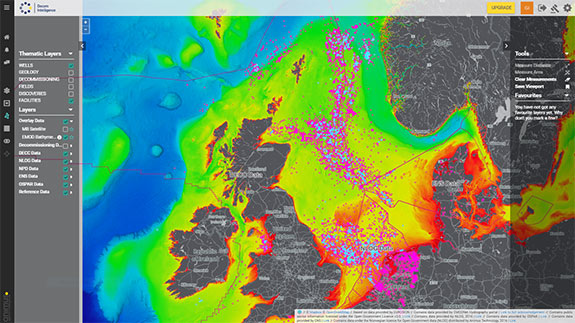New technology platform is a catalyst for collaboration
Bright minds cannot work in isolation. They need the fuel of up-to-date information to steer astute decision making. Until now, those working in decommissioning disciplines as part of the wider oil and gas industry have not had a complete picture of technologies and techniques in one place.
Oil and Gas UK’s Decommissioning Insight Report 2015 showed that up to 100 platforms and 1200 wells will face decommissioning action over the next decade. This work demands leadership and a visionary approach.
There is a potentially significant pipeline of projects to be managed with expertise and driven by constant learning. Until now, the data available for operators and stakeholders has been sparse and siloed; solutions have not come easily. Decommissioning also stands as a liability on contracts and balance sheets.
If the cost of this work can be lowered through greater understanding and shared initiatives then it will strengthen a wider industry that has suffered under the prolonged strain of deflated oil prices.
Statistics prove opportunity
Platforms which have already passed their design lifespans are still active due to advances in asset integrity management and also production efficiencies.
There are hundreds of platforms still meeting operational requirements, but there is no doubt that the demand and usefulness of others will cease: 47 new platforms entered the Oil and Gas UK decommissioning forecasts in the year 2014/15.
Oil and Gas UK forecasts that £16.9 billion will have to be spent on decommissioning activity up to 2024, with two-thirds of this taking place after 2020. Clearly all of this work generates exhaustive, evolving data.
But, information doesn’t mean insight. Data alone can’t facilitate the best decisions.
Point of technology
Strategic Decom and Animus have created DecomIntelligence to provide a new set of tools to analyse and interpret data, giving owners, regulators, financial and M&A specialists and the supply chain greater insight. Features include a technology tracker, maps, live news, e-learning, links and the ability to cross-reference data.
It maps all fields, platforms and wells in the UK Continental Shelf with the use of information from collated sources including the Department of Energy and Climate Change (DECC). In its holistic approach, it also brings together data from the Norwegian Petroleum Directorate (NPD), the Danish Energy Industry (ENS), the Netherlands Oil and Gas (NLOG) and OSPAR (Convention for the Protection of the Marine Environment of the North-East Atlantic).
The technology tracker allows operators and contractors can see and screen equipment available in the industry. The data system uses filters to allow industry professionals to customise their own requirements and balance this against what is available. Instead of seeing a spreadsheet list with 70 000 lines, the user becomes engaged with an interactive dashboard, with slide bars, graphs and pop-up data streams. This is information that is live and ready for download and use.

Difference in industry approach
It is this strength and depth of data management that the oil and gas industry is calling for now. The wide ranging Wood Review has been analysed by all stakeholders and recommendations turned into action. Collaboration is an overarching theme and it is one that decommissioning is prepared to harness from the outset. As such a burgeoning part of the wider industry, it can showcase the best of data management and shared knowledge for mutual benefit.
DecomIntelligence is the first application using this platform publically but its applications are limitless. It could equally be at home in many industries, including finance, defence or aviation. Vision and a human touch are required to open data so it can be understood and used. It generates essential insight with a just a few clicks. To find out more please visit: http://www.decomintelligence.com/

Edited from an article by Richard Heard, Giles Thompson and Peter Taylor.
Read the article online at: https://www.oilfieldtechnology.com/special-reports/26052016/new-technology-platform-is-a-catalyst-for-collaboration/
You might also like
Subsea7 awarded contract offshore Egypt
Subsea7 will be responsible for the engineering, procurement, commissioning and installation of flexible pipelines, umbilicals, and associated subsea components for a tie back to existing infrastructures.

